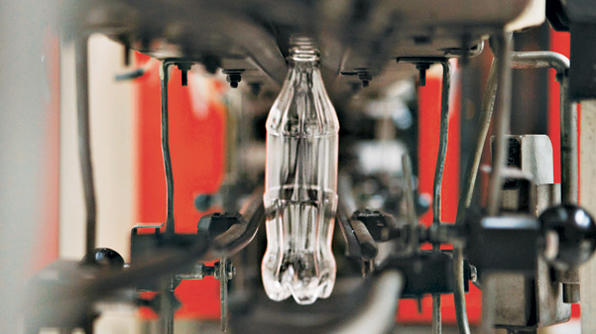The Coca-Cola Company and its global bottling partners (the Coca-Cola system) say they are on track to meet their 2020 water replenishment goal by the end of 2015.
Based on the Coca-Cola system’s global water replenishment projects to date, the system is balancing the equivalent of an estimated 94% of the water used in its finished beverages based on 2014 sales volume.
Since 2004, Coca-Cola has replenished an estimated 153.6 billion liters of water back to communities and nature through 209 community water projects in 61 countries.
The Coca-Cola system returned approximately 126.7 billion liters of water used in its manufacturing processes back to communities and nature through treated wastewater in 2014.
These combined efforts put Coca-Cola on track to be the first global food and beverage company to replenish all the water it uses back to communities and nature.
“There is no resource more precious to human life and the health of our global ecosystems and economies than water. As a consumer of water, the Coca-Cola system has a special responsibility to protect this shared resource. This is why we set an aspirational goal of being water neutral by 2020,” said Muhtar Kent, chairman and CEO, The Coca-Cola Company.
“While we have made significant progress toward making that goal a reality, we are more intent than ever to give back the equivalent of all the water that we use to communities and nature. And we will continue to do so after we meet the 100 percent goal.”
Coca-Cola is able to give back the amount of water equivalent to what it uses in its finished beverages and their production through replenishment projects, increasing water use efficiency in its plants, and returning water to watersheds and municipalities through wastewater treatment.
Part of meeting its replenishment goal is engaging in diverse, locally focused community water projects.
Each project works toward set objectives such as providing or improving access to safe water and sanitation, protecting watersheds, supporting water conservation and raising awareness on critical local water issues.
Once projects are established, the company and its bottling partners work to ensure those projects remain sustainable within communities over time and continue to replenish water. These efforts, as well as new projects, frequently address local source water vulnerabilities and balance additional sales volume as Coca-Cola’s business continues to grow each year.
“More and more companies now recognize that factoring nature into their decision-making is a smart business strategy,” said Mark Tercek, president and CEO, The Nature Conservancy.
“Coca-Cola’s commitment to water underscores that investing in nature can produce very positive returns for businesses and local communities.”
TNC helped to design the methodology to quantify Coca-Cola’s water replenishment efforts to balance the water used in finished beverages.
The methodology for calculating water replenishment benefits also was the subject of scientific technical peer review to verify the use of generally accepted methods and accuracy for the foregoing purpose.
Projects are reviewed annually and evaluated using this methodology.
Partnership
Two major contributors to Coca-Cola’s water replenishment activities are The Coca-Cola Africa Foundation’s Replenish Africa Initiative (RAIN) and the Company’s Every Drop Matters partnership with United Nations Development Programme (UNDP).
Through RAIN, Coca-Cola partners with Global Environment & Technology Foundation, United States Agency for International Development, Water and Sanitation for the Urban Poor, Millennium Challenge Corporation, WaterAid, Water for People, and other organizations and local governments to bring safe drinking water to an estimated six million Africans by 2020.
Through Every Drop Matters, Coca-Cola and UNDP have worked together to improve safe water access for more than an estimated one million people in Eastern Europe and the Middle East with projects focused on watershed restoration, sustainable agriculture, infrastructure improvements and advocating for needed water policy.










